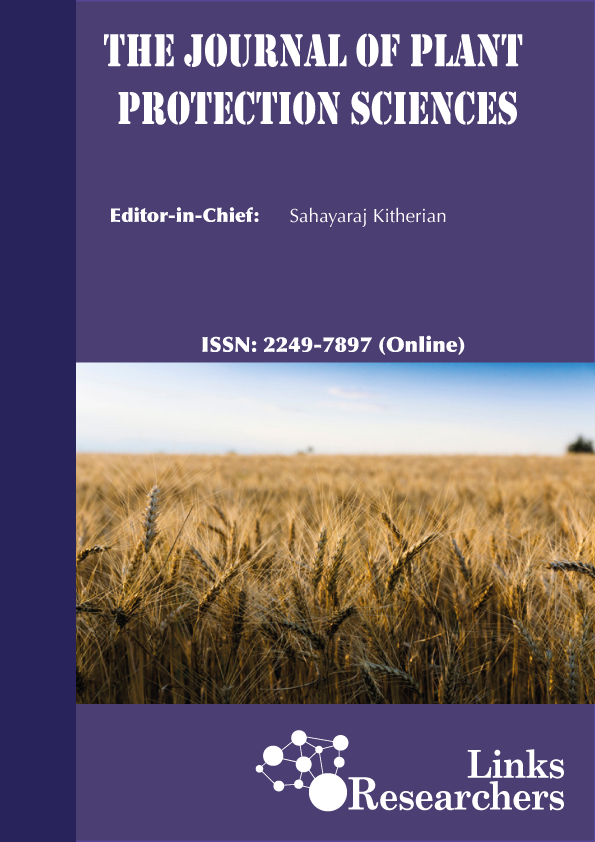Screening of chilli microflora and other biocontrol agents for their antagonistic effects on Colletotrichum spp. infecting chillies
Honnur Basha, Vinaya Hemannavar, B.Ramanujam, R. Rangeshwaran and S.Sriram
ABSTRACT
Forty-five leaf and nine fruit samples of chilli were collected from different regions of Karnataka for isolation of chilli microflora. From these samples, 94 fungal and 89 bacterial isolates were derived, which included 50 isolates of fungi and 44 isolates of bacteria from phylloplane and pomoplane, 44 isolates of endophytic fungi and 45 of endophytic bacteria from inside the leaf and fruit tissues, respectively. Among them, 70 fungal isolates belonged to plant pathogenic genera like,Alternaria, Cercospora, Colletotrichum, Curvularia, Glomerella, Mycosphaerella, Phoma and Stemphylium and the other 24 isolates of fungi belonged to Aspergillus, Acremonium, Chaetomella,Cunninghamella, Geotrichum, Gliocladium, Monodictys, Mucor, Myrothecium, Penicillium, Periconia and Pithomyces. One-hundred and thirteen isolates of chilli microflora and 49 isolates of Trichoderma, 19 isolates of Bacillus sp., 34 isolates of Pseudomonas fluorescens and 29 isolates of yeasts from NBAII germplasm collection of biocontrol agents were tested for their antagonistic effect on Colletotrichum gloeosporioides and C. capsici by dual culture test. Among the isolates of chilli microflora tested, Aspergillus flavus showed 70.2% inhibition of C. gloeosporioides and 54.9% inhibition of C. capsici.Among the isolates of Trichoderma sp. tested, T.virens (Tvs-KSD isolate) and T. pseudokoningii (Tpk-1) showed highest percent inhibition of C. gloeosporioides (69.7%) and T. viride (Tv-5 isolate) showed highest percent inhibition of C. capsici(51.9%).Among the bacterial isolates tested,Bacillus S-15 showed highest percent inhibition of C. gloeosporioides(30%) and S-9 isolates showed highest percent inhibition of C. capsici (51.3%).
To share on other social networks, click on any share button. What are these?





